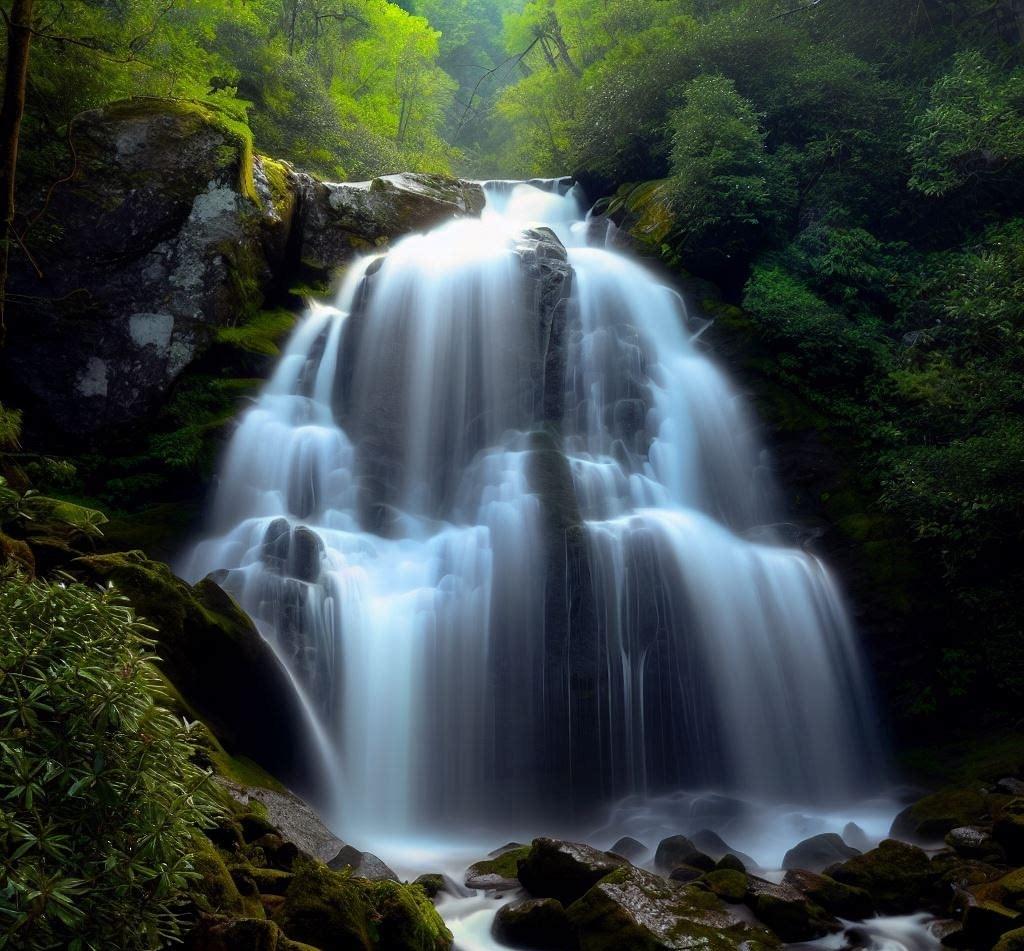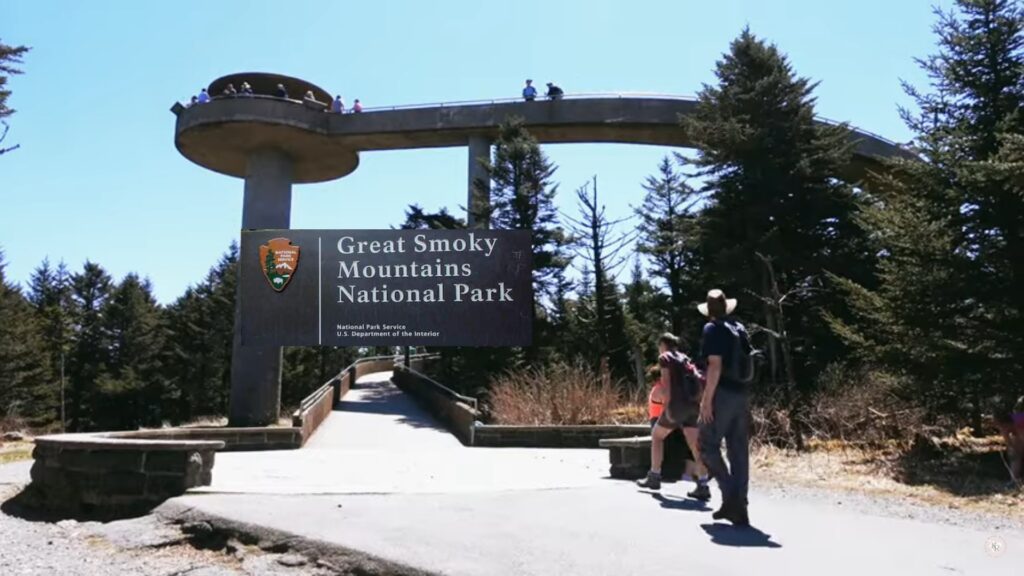Great Smoky Mountains National Park, Tennessee, North Carolina
Great Smoky Mountains National Park is a natural wonderland that attracts millions of visitors every year. It is the most visited national park in the United States and for good reasons. The park offers stunning scenery, diverse wildlife, rich history, and endless opportunities for outdoor recreation. Whether you are looking for a relaxing getaway or an adventurous challenge, you will find something to suit your taste in this park.
History of the Great Smoky Mountains National Park
The Great Smoky Mountains have a long and fascinating history that spans thousands of years. The first inhabitants of the area were the Paleo Indians, who hunted and gathered in the mountains about 11,000 years ago.
They were followed by the Cherokee Indians, who called the mountains Shaconage, meaning “place of the blue smoke”. The Cherokee developed a complex culture and society in harmony with nature and resisted the encroachment of European settlers for centuries.
The first Europeans to explore the region were Spanish conquistadors in the 16th century, but they did not establish permanent settlements. The first permanent settlers were Scots-Irish immigrants who arrived in the late 18th century. They cleared the land for farming and built log cabins, churches, schools, and mills. They also brought their traditions of music, crafts, and storytelling to the mountains.

In the late 19th and early 20th centuries, the logging industry boomed in the area, threatening to destroy the forests and wildlife. Many local residents opposed logging and advocated for the preservation of the mountains.
In 1926, Congress authorized the creation of a national park in the Great Smoky Mountains but required that the states of Tennessee and North Carolina purchase the land from private owners. With the help of private donations, especially from the Laura Spelman Rockefeller Memorial Fund, the states acquired over 500,000 acres of land and transferred it to the federal government.
In 1934, Great Smoky Mountains National Park was officially established as the first national park whose land and other costs were paid for in part with federal funds. President Franklin D. Roosevelt dedicated the park in 1940.
Facts about the Great Smoky Mountains National Park
Great Smoky Mountains National Park is one of the largest and most diverse protected areas in the eastern United States. Here are some facts about the park that you may not know:
- The park covers 522,419 acres of land in Tennessee and North Carolina
- The park has more than 800 miles of trails for hiking, biking, and horseback riding
- Some of the most popular trails are Appalachian Trail, which crosses the park for 71 miles; Alum Cave Trail, which leads to Mount Le Conte; Abrams Falls Trail, which passes by a 20-foot waterfall; and Cades Cove Loop Road, which offers scenic views of historic buildings and wildlife.
- The park has some of the highest mountains in Eastern North America
- The highest point in the park is Clingmans Dome, which is 6,643 feet tall
- That is taller than two Empire State Buildings stacked on top of each other.
- The park has more than 1,500 kinds of plants, including more than 200 species of trees and more than 1,600 species of flowering plants. The park is famous for its wildflowers, which bloom from late winter to late fall. Some of the most beautiful wildflowers are trilliums, lady’s slippers, fire pinks, and rhododendrons.
- The park has more than 400 kinds of animals, including more than 65 species of mammals, more than 200 species of birds, more than 80 species of reptiles and amphibians, and more than 50 species of fish. The park is home to black bears, white-tailed deer, elk, coyotes, bobcats, foxes, otters, beavers, squirrels, chipmunks, raccoons, skunks, bats, owls, hawks, eagles, turkeys, cardinals, warblers, hummingbirds, trout, bass, and many more.

Things to Do in Great Smoky Mountains National Park
There is no shortage of things to do in Great Smoky Mountains National Park. Whether you want to enjoy nature or learn about history or culture, you will find something to suit your interest in this park. Here are some suggestions for things to do in the park:
- Visit one of the four visitor centers in the park: Sugarlands Visitor Center near Gatlinburg; Oconaluftee Visitor Center near Cherokee; Cades Cove Visitor Center near Townsend; or Clingmans Dome Visitor Center near Newfound Gap. You can get maps, brochures, exhibits, films, and ranger programs at these centers.
- Explore the historic buildings that are preserved or restored in the park. You can see log cabins, barns, churches, schools, mills, and other structures that reflect the life of the early settlers. Some of the best places to see historic buildings are Cades Cove, Cataloochee, Elkmont, and Roaring Fork.
- Watch the wildlife that inhabits the park. You can see animals in their natural habitats, but remember to keep a safe distance and do not feed or approach them. Some of the best places to see wildlife are Cades Cove, Cataloochee, Oconaluftee River Valley, and Roaring Fork.
- Admire the waterfalls that cascade down the mountains. You can hike to some of the most beautiful waterfalls in the park, such as Laurel Falls, Grotto Falls, Rainbow Falls, Abrams Falls, and Ramsey Cascades. You can also drive to some of the waterfalls that are visible from the road, such as Meigs Falls, The Sinks, and Place of a Thousand Drips.
- Enjoy the scenic views that the park offers. You can drive along some of the most scenic roads in the park, such as Newfound Gap Road, Roaring Fork Motor Nature Trail, Foothills Parkway, and Blue Ridge Parkway. You can also hike to some of the most scenic overlooks in the park, such as Clingmans Dome Observation Tower, Charlies Bunion, Andrews Bald, and Chimney Tops.
Address of Great Smoky Mountains National Park
Great Smoky Mountains National Park has three main entrances: one in Gatlinburg, Tennessee; one in Townsend, Tennessee; and one in Cherokee, North Carolina. The park does not have a physical address, but you can use the following addresses for your GPS or navigation system:
- Gatlinburg entrance: 107 Park Headquarters Road, Gatlinburg, TN 37738
- Townsend entrance: 7906 E Lamar Alexander Parkway, Townsend, TN 37882
- Cherokee entrance: 1194 Newfound Gap Road, Cherokee, NC 28719
Also, use the following coordinates for your GPS or navigation system:
- Gatlinburg entrance: 35.6852° N, 83.5365° W
- Townsend entrance: 35.6757° N, 83.7551° W
- Cherokee entrance: 35.4768° N, 83.3166° W
Or download a free application and detailed topographic maps for accurate navigation in areas without cellular service.
Best Times to Visit Great Smoky Mountains National Park
The best times to visit the park is during sunrise or sunset. The park has many scenic overlooks where you can watch the sky change colors and the mountains glow. Some of the best places to see sunrise or sunset are Clingmans Dome Observation Tower, Newfound Gap, Cades Cove, and Oconaluftee River Valley. You can also see the stars at night, as the park has very little light pollution.
FAQ:
Q: What is the name of the haze that gives the Smoky Mountains their name?
A: The haze is called shaconage by the Cherokee people, or “place of blue smoke”. It is caused by moisture and organic compounds emitted by the dense vegetation in the park.
Q: What is the highest peak in the park and how high is it?
A: The highest peak in the park is Clingmans Dome, which is 6,643 feet (2,025 meters) above sea level. It is also the highest point in Tennessee and the third highest point east of the Mississippi River.
Q: How many species of flowering plants are found in the park?
A: The park has more than 1,500 species of flowering plants, making it one of the most diverse temperate forests in the world. Some of the notable flowers include rhododendrons, azaleas, mountain laurels, orchids, and trilliums.
Q: What is the most visited national park in the United States?
A: The Great Smoky Mountains National Park is the most visited national park in the United States, with 14.1 million visitors in 2021. The park attracts visitors from all over the country and the world, who come to enjoy its scenic beauty, wildlife, history, and culture.
Q: How many waterfalls are there in the Great Smoky Mountains National Park?
- Abrams Falls: A 20-foot-high waterfall with a large volume of water rushing over it. It is located on Abrams Falls Trail, which is 5 miles round-trip and moderate in difficulty.
- Grotto Falls: A 25-foot-high waterfall that you can walk behind and enjoy the cool grotto. It is located on Trillium Gap Trail, which is 2.6 miles round-trip and easy in difficulty.
- Laurel Falls: An 80-foot-high waterfall that is one of the most visited destinations in the park. It is located on Laurel Falls Trail, which is 2.6 miles round-trip and paved but not suitable for strollers or wheelchairs.
- Deep Creek’s Three Waterfalls: A trio of waterfalls that include Indian Creek Falls, Tom Branch Falls, and Juney Whank Falls. They are located on Deep Creek Trail, which is 1.6 miles round-trip and easy in difficulty.






